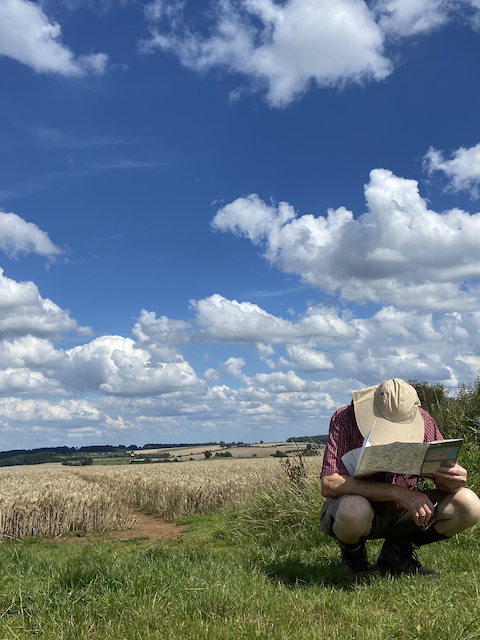Craig Fees, "Introduction: The IHWTE Publication Series", in Tony Rees, “An Obscure Philanthropist”: Frank Mathews 1871-1948, Castle View Books, Leominster (2009), pp. 241-243
Dr. A.I. Rees grew up with Frank Mathews and the Birmingham Society for the Care of Invalid and Nervous Children. When his mother died, he became responsible for the surviving records of the Society and Frank Mathews, and in another way for the memory and history of some remarkable pioneering visions and work in creating therapeutic environments for ill, disabled and sometimes traumatised and disturbed children, and their families.
Meeting Dr. Rees in 1992, something of that sense of innovation, significance and possibility was passed on to the Archive and Study Centre, which was then in its infancy. There it matured, and when Dr. Rees completed work on his manuscript, and brought the Frank Mathews collection to the Archive and Study Centre to be permanently looked after and made available to the public, it helped to trigger what has now become the Institute for the History and Work of Therapeutic Environments.
To give it its full title, the IHWTE "is a designated research and study centre of the University of Birmingham in partnership with the Planned Environment Therapy Trust Archive, Research and Study Centre, and based at the Planned Environment Therapy Trust, Church Lane, Toddington, Cheltenham, Glos. GL54 5DQ".
To put it into other terms, the IHWTE is a creative partnership between an archive - a holder of personal and community memory - and one of the major academic research institutions in the United Kingdom. For its part, the Planned Environment Therapy Trust Archive, Research and Study Centre is the only facility of its kind, in Britain or the world, devoted specifically to therapeutic communities and environments. The partnership is devoted to deepening our understanding of what makes for a healing environment in different eras and circumstances, and to applying that understanding to practice and policy today.
At the core of the IHWTE's work is history: the record of those who have explored these questions on our behalf in the past; the stories of what they did and how and why; and the report of their successes, their failures, and the outcomes in the lives of the children, families, and staff who were involved. It is a scientific exploration of what has worked, what does work, and why.
In this we are sometimes fortunate in having the witness of living testimony. When I interviewed 93 year old Ivy Parry in 2006, she told how Frank Mathews' intervention on her behalf almost ninety years earlier, when she was diagnosed with bone tuberculosis ("Childhood's Most Dangerous Enemy" according to an 1897 article in the New York Times), had freed her from the conventional future of potential amputation, and limitation. She had grown up, married, played tennis, had children – and proved in her 20th and 21st century life, and well after he had died, the fundamental rightness of Frank Mathews' pioneering Edwardian vision.
Sometimes we are fortunate in having the evidence of direct archival memory: the original letters, logbooks and other documents produced as the raw material of the working/living day, and often thrown away at the end of it. Produced in anticipation, but in innocence of how it all turned out in the end, they allow us to reconstruct the rich and hidden grammar of the everyday discovery and problem-solving which got us to where we are now. This in turn – and especially with the amplification and clarification of living memory - gives us the potential to know ourselves better, to understand the most likely outcomes and consequences of this or that action, and to take decisions which more frequently and more accurately achieve what we want them to achieve. This is as true of a child care worker faced with an enraged child barricading themselves in a room and throwing furniture out of the window as it is a member of Parliament working in subcommittee on a new piece of social health care legislation.
But this requires that the memory is available on the one hand, and that it is robustly and energetically engaged in the present on the other. Hence this new publication series, and the Institute for the History and Work of Therapeutic Environments.
This book is the first fruit of a programme of publication which Dr. Rees helped to set in train when he brought the manuscript to the Archive and Study Centre in 2006. It contains experience and achievement which not only inform how we live and work with children and families now, but challenges any complacency we might be inclined to feel, either about ourselves and what we have achieved, or about the relative wisdom of past and present and who can learn most from listening to whom. It is the first of a series of original monographs of biography and autobiography, of unpublished archive material, of ephemeral or hard-to-find published work, of previously unpublished texts and other items which will individually and as a collection challenge our complacency, excite our imagination, and add significantly to our understanding of ourselves and our capacity to shape the future.
Dr. Craig Fees, RMSA
Honorary Director, Institute for the History and Work of Therapeutic Environments
Archivist, Planned Environment Therapy Trust Archive and Study Centre
